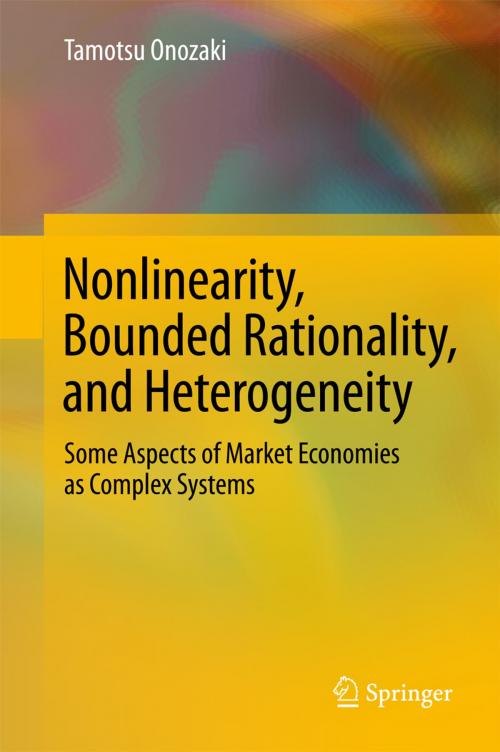Nonlinearity, Bounded Rationality, and Heterogeneity
Some Aspects of Market Economies as Complex Systems
Business & Finance, Economics, Theory of Economics| Author: | Tamotsu Onozaki | ISBN: | 9784431549710 |
| Publisher: | Springer Japan | Publication: | January 28, 2018 |
| Imprint: | Springer | Language: | English |
| Author: | Tamotsu Onozaki |
| ISBN: | 9784431549710 |
| Publisher: | Springer Japan |
| Publication: | January 28, 2018 |
| Imprint: | Springer |
| Language: | English |
This book pursues a nonlinear approach in considering both chaotic dynamical models and agent-based simulation models of economics, as well as their dynamical behaviors. Three key concepts arising in this context are “nonlinearity,” “bounded rationality” and “heterogeneity,” which also make up the title of the book. Nonlinearity is the warp that runs throughout all models because systems that exhibit chaotic or other complex behavior in the absence of any exogenous disturbances are absolutely nonlinear. Bounded rationality constitutes the woof, because economic systems do not exhibit complex behavior if all agents are perfectly rational, as is usually assumed in neoclassical economics. Agents who are boundedly rational have to struggle to do their best with limited information and tend to adapt to their economic environment without knowing what is the best. Furthermore, the heterogeneity of firms or consumers dyes the fabric of complex dynamics woven from the warp and woof.
This book pursues a nonlinear approach in considering both chaotic dynamical models and agent-based simulation models of economics, as well as their dynamical behaviors. Three key concepts arising in this context are “nonlinearity,” “bounded rationality” and “heterogeneity,” which also make up the title of the book. Nonlinearity is the warp that runs throughout all models because systems that exhibit chaotic or other complex behavior in the absence of any exogenous disturbances are absolutely nonlinear. Bounded rationality constitutes the woof, because economic systems do not exhibit complex behavior if all agents are perfectly rational, as is usually assumed in neoclassical economics. Agents who are boundedly rational have to struggle to do their best with limited information and tend to adapt to their economic environment without knowing what is the best. Furthermore, the heterogeneity of firms or consumers dyes the fabric of complex dynamics woven from the warp and woof.















